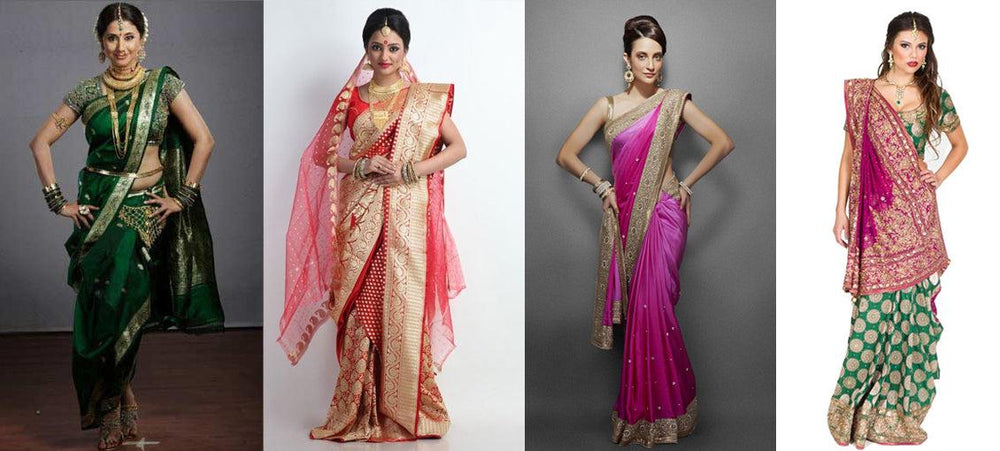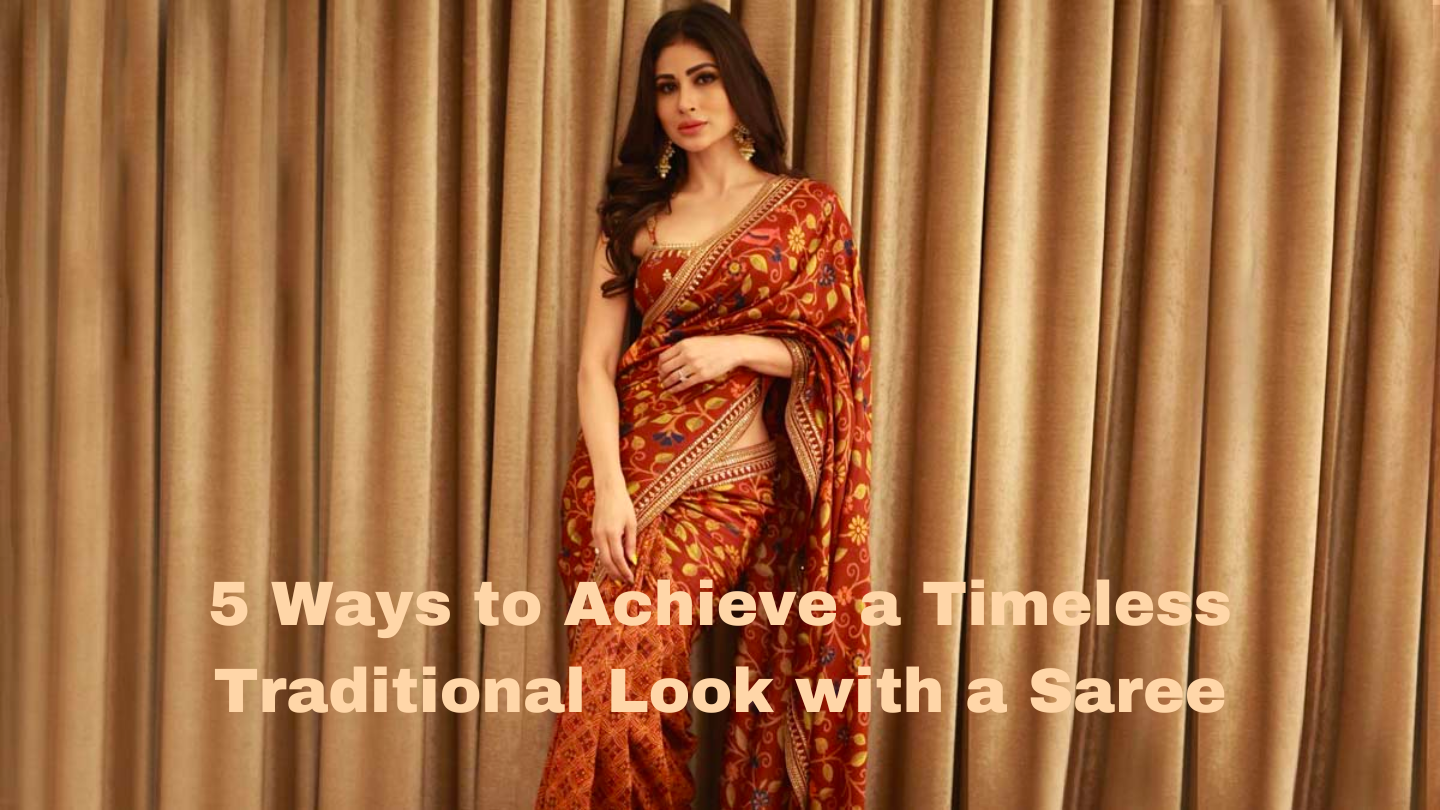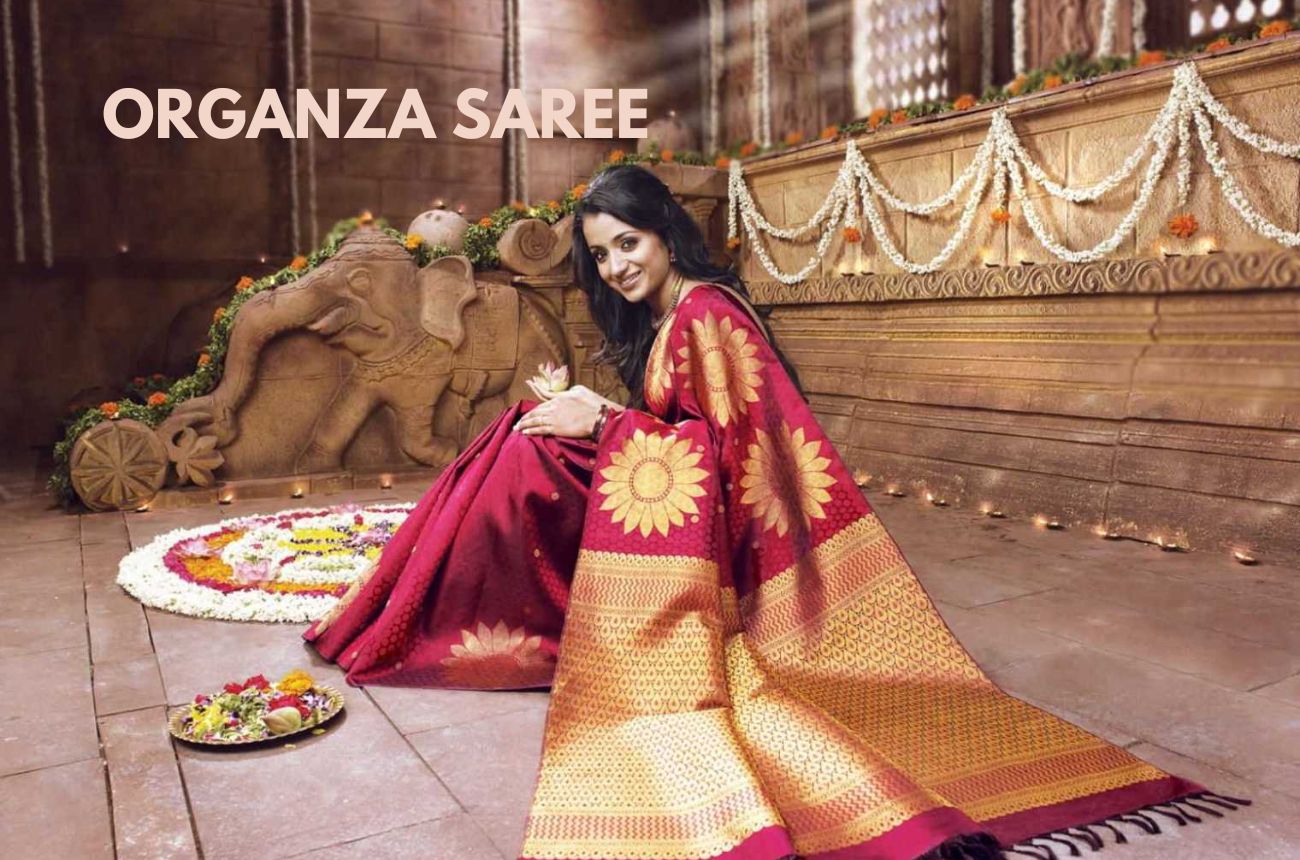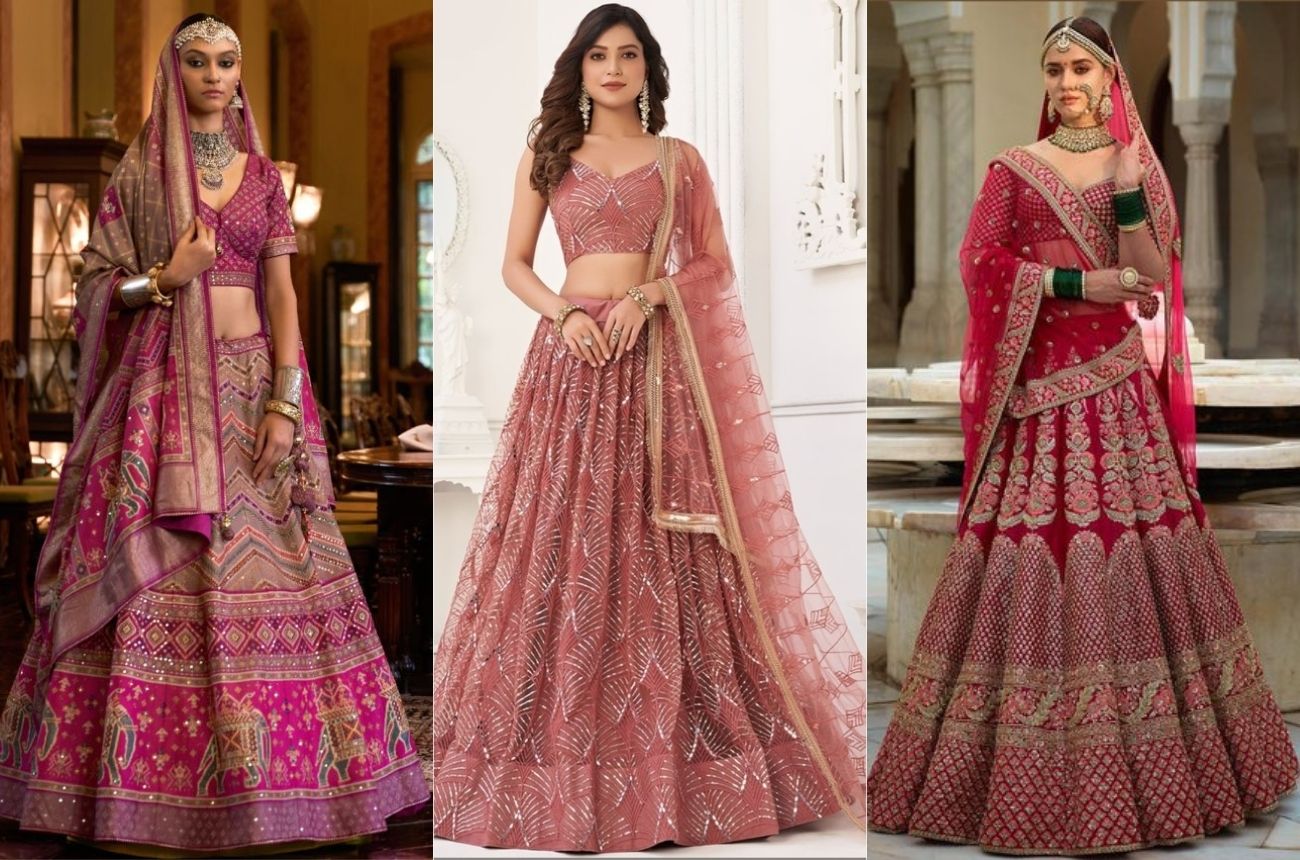The saree, a quintessential Indian attire, exudes elegance, grace, and enduring charm. As an emblem of India’s rich culture and legacy, it adorns women for a myriad of occasions: from grand weddings and vibrant festivities to formal gatherings. Its versatility offers endless possibilities to fashion a traditional, yet contemporary look.
When it comes to styling a saree, there is no denying the appeal of the traditional look. This timeless style is especially fitting for momentous events like weddings, where elegance and refinement are key. Adorning yourself in a traditional saree is a beautiful celebration of the vibrant Indian culture, and a testament to the pride you take in it.
If your goal is to exude a classic vibe while donning a saree, the first step is selecting the perfect fabric. With options such as silk, cotton, and chiffon, you can’t go wrong. These materials not only exude a traditional essence, but they also drape gracefully and elevate your overall appearance.
Let’s move on to selecting a saree in a classic hue, such as vibrant red, lush green, or shimmering gold. These hues not only hold deep cultural symbolism in Indian traditions but are also often worn for special and lucky events. For a truly traditional look, consider sarees adorned with detailed embroidery or decorative accents.
Once you have selected the perfect saree, the next step is to drape it in the time-honoured manner. The Nivi style is the most popular and involves elegantly wrapping the saree around the waist and draping it over the shoulder. Not only does this style exude tradition, but it also enhances the body’s natural curves, resulting in a timeless and graceful feminine appearance.
Elevate your saree look by coordinating it with a complimentary blouse. Transform your ensemble with a detailed blouse featuring elegant designs like zari or mirror work for a traditional yet sophisticated touch. For a contemporary edge, experiment with a high-neck or backless blouse.
Complete your traditional saree ensemble with the perfect jewellery pieces. The shimmering gold or silver jhumkas, bangles, and statement necklace not only infuse a touch of glamour, but also elevate the saree’s traditional appeal. Take it a step further by adorning a bindi on your forehead. This small dot between the eyebrows carries deep cultural significance in Indian traditions, adding a spiritual element to your look.
When it comes to choosing the right footwear, nothing beats the timeless appeal of juttis or mojris paired with a traditional saree. These quintessentially Indian shoes not only offer comfort but also imbue the outfit with an ethnic charm. For makeup, a natural and understated look is ideal. A light base, defined eyes, and a bold lip in shades of red or maroon will perfectly complement the traditional saree ensemble.
In conclusion, donning a saree is a beautiful way of honouring and celebrating our vibrant Indian culture. By carefully selecting the perfect fabric, colour, draping technique, accessories, and makeup, one can effortlessly exude a timeless and sophisticated aura. Don’t hesitate to confidently embrace the traditional saree look for any memorable occasion and radiate elegance and poise.
How to look traditional in saree?

Donning a saree is more than just putting on an outfit, it is a celebration of India’s rich culture and heritage. This timeless attire has been cherished for generations and continues to be a beloved choice for festivities and events. Its exquisite drape exudes an aura of tradition and sophistication, instantly elevating the appearance of any woman. But the key to achieving a truly traditional look in a saree lies in the details. Here are some essential pointers to help you rock a saree with traditional flair:
1. Choose the Right Fabric: The type of fabric used in a saree is vital in achieving a traditional appearance. For an authentic look, consider materials such as silk, cotton, or chiffon. These are commonly found in traditional sarees and possess a luscious texture that drapes elegantly, enhancing the traditional allure of the garment.
2. Pick the Right Colour: The vibrant shades of traditional sarees, such as deep reds, lush greens, striking blues, and shimmering golds, play a crucial role in creating an authentic and timeless look. Not only do these colours enhance the traditional charm, but they also perfectly complement the rich and beautiful Indian skin tone.
3. Select the Right Draping Style: The exquisite draping style of a saree sets it apart from other traditional Indian ensembles. For a classic and widely loved look, embrace the Nivi style of draping. This entails carefully pleating the saree and securing it at the waist, with the graceful pallu elegantly draped over one shoulder.
4. Accessorise with Traditional Jewellery: No traditional outfit is complete without the perfect jewellery to match. Enhance your traditional look by incorporating classic Indian pieces such as jhumkas, bangles, maang tikka, and a striking necklace. These accessories not only enhance the overall traditional aesthetic, but also elevate your entire appearance.
5. Go for Traditional Prints and Patterns: Go for traditional sarees adorned with intricate and stunning prints and patterns. Look for designs like paisley, floral, or ethnic motifs to elevate the traditional charm of your saree and make a statement.
6. Experiment with Blouse Designs: The blouse serves as a crucial element of a saree, having the power to elevate or detract from your traditional appearance. Rather than settling for a basic blouse, consider opting for a traditional blouse design such as a high-neck, long-sleeved, or backless style. This choice will not only add a distinct flair to your saree, but also showcase a perfect blend of tradition and style.
7. Drape a Dupatta: Elevate the timeless elegance of your saree with the addition of a dupatta draped over your shoulder. Whether you opt for a coordinating dupatta or a bold contrast, this elegant touch will exude a regal and traditional flair.
8. Wear Traditional Footwear: Complete the traditional look by choosing traditional footwear such as juttis, mojris, or kolhapuris. These shoes not only enhance the traditional appeal, but also offer comfort when wearing a saree.
9. Pay Attention to Hair and Makeup: To exude a traditional aura in a saree, your hair and makeup must harmonise with the overall aesthetic. Embrace traditional Indian hairstyles such as a bun, braid, or elegant side parting. For makeup, aim for a soft and understated appearance, but make a statement with a bold lip colour for a touch of glamour.
10. Confidence is Key: Embrace confidence and comfort to truly embody the traditional saree look. Exude grace and poise as you carry yourself, effortlessly summoning the timeless elegance of this cultural attire.
To achieve the perfect traditional saree look, it is essential to consider various elements such as fabric, colour, draping style, accessories, prints, patterns, and footwear. However, do not forget that the most important aspect is to exude confidence and embrace the rich culture and tradition associated with it. With these tips in mind, you can confidently rock your saree and showcase its elegance and sophistication. So, go ahead and flaunt your traditional appeal with a stunning saree.
Which traditional dress is saree?

For centuries, saree has been a beloved traditional Indian garment. Its graceful and flowing design, meant to be draped around the body, is primarily associated with women. What makes sarees truly special is their adaptability – they can effortlessly elevate any occasion, be it a wedding, festival, or even casual wear.
Saree, a timeless and elegant garment, boasts a rich history that dates back to the Indus Valley Civilization, approximately 2800-1800 BC. Initially used for modesty, it has transformed into a stunning and delicate piece of attire. In contemporary times, the saree represents the essence of India’s vibrant culture and heritage, signifying its enduring beauty and significance.
Sarees come in a variety of fabrics, colours, and designs. The most commonly used fabric is silk, which is known for its luxurious feel and rich look. Other fabrics such as cotton, chiffon, georgette, and many more are also used to make sarees. Each fabric has its unique characteristics and is used for different occasions. For example, silk sarees are typically worn for formal events, while cotton sarees are more suitable for everyday wear.
The saree’s draping style is undeniably one of its most distinct qualities. Elegantly flowing over six yards in length, the saree is artfully wrapped around the waist, one end tucked into the waistband while the other gracefully drapes over the shoulder. This unique draping technique varies across different regions of India, with each state boasting its own individualised method of adorning the saree. In North India, the style of draping differs from that in South India, showcasing the diversity of this traditional garment.
ALSO READ : Finding the Perfect Wedding Dress for Your Body: A Comprehensive Guide to Dress Styles for Every Body Type
Sarees are renowned for their exquisite designs and patterns, with some of the most favoured being floral, paisley, and geometric. These designs are skillfully crafted onto the fabric, whether through hand-weaving or printing, resulting in each saree possessing its own distinct charm. To further enhance their allure and sophistication, certain sarees boast intricate embroidery.
Aside from the classic sarees, there are now modern and contemporary variations available that cater to ever-evolving fashion styles. These sarees combine various fabrics, intricate patterns, and unconventional draping techniques. They have become a favourite among the younger crowd who seek to embrace their heritage while staying current with the newest trends in fashion.
Sarees have transcended beyond the borders of India and have captured the hearts of people worldwide. Their timeless charm and versatility have been acknowledged by renowned fashion designers, who have incorporated them into their collections. Not to mention, the glamour of Bollywood has also contributed to the global popularity of sarees, with stunning actresses elegantly displaying them in their films.
One cannot deny the allure of a saree that effortlessly enhances the beauty of every individual. This elegant piece of clothing transcends age, body shape, and size, making it a perfect fit for all women. With its ability to accentuate a woman’s curves, the saree adds a touch of grace and sophistication to any look. Not to mention, its versatility knows no bounds as it can be worn all year round, making it a practical and fashionable choice.
In summary, the saree transcends beyond mere fabric and embodies the rich traditions and customs of India. Enduring through the ages, it has transformed into a revered fashion symbol adored by females across the globe. Its evergreen elegance, adaptability, and diverse draping techniques ensure that it remains a cherished and traditional attire for many generations to come.
What is the tradition of wearing saree?

For centuries, the saree has been an integral part of women’s attire in the Indian subcontinent, serving as a timeless symbol of culture, grace, and femininity. Its versatile length of fabric can be draped in countless styles, making it a cherished tradition passed down through generations. This iconic garment not only represents tradition but also embodies the beauty and grace of Indian women.
The enduring appeal of saree lies in its boundless versatility. With its myriad of draping styles, it can effortlessly adapt to any occasion and cater to one’s personal taste and cultural traditions. The quintessential way of styling a saree involves wrapping it around the waist, carefully pleating and securing it with the waistband, and then playfully draping the elegant pallu over the shoulder, with endless possibilities for unique touches – from cascading over the head to delicately adorning the neck.
The saree holds a rich and meaningful cultural value, frequently linked with significant occasions and festivities in a woman’s existence. For instance, it is the preferred attire for weddings, religious rituals, and traditional celebrations. In certain areas, it is even donned as daily wear, featuring more straightforward patterns and materials.
Not only does the saree hold tremendous cultural importance, but it also embodies womanhood and grace. Its intricate draping style beautifully enhances a woman’s curves, exuding an air of elegance and refinement. And with the pallu draped over the head, it serves as a symbol of modesty and reverence.
The saree has taken the fashion world by storm, gaining popularity on a global scale. This traditional Indian garment has been given a modern twist by designers, making it a must-have in their collections. Not only that, but it has also become a popular choice among celebrities and influencers who love flaunting it on their social media platforms. A true representation of Indian culture, the saree has even graced red carpets and award shows, being donned by international celebrities.
Although the practice of donning a saree has its obstacles, it remains an integral part of our heritage. But in the face of western culture and progress, more and more women are favouring the comfort and ease of alternative clothing. As a result, the traditional saree is losing its appeal among the younger crowd. Nevertheless, there are ongoing attempts to rejuvenate this timeless attire by infusing contemporary elements and methods.
To sum up, the saree holds a deeper significance than simply being a garment. It serves as a symbol of India’s vibrant culture and history. Through centuries, it has maintained its relevance and remains deeply rooted in Indian society. From its origins to its widespread acclaim, the saree continues to exude sophistication and grace for women, carrying on its legacy for years to come.
Which colour saree is more attractive?
The timeless saree is a quintessential piece of traditional Indian attire, exuding elegance and beauty in every fold. For centuries, this graceful garment has been worn by women of all ages and backgrounds, symbolising the rich cultural heritage of India. With a plethora of colors, patterns, and fabrics to choose from, sarees are a versatile choice for any occasion. But when it comes to the most alluring saree color, the decision is tough, as each hue possesses its own inherent charm and allure. So, let’s delve into the world of saree colors and uncover what makes them so appealing.
1. Red Saree

With its bold and vibrant hue, red is a color that exudes passion and love. It is often linked with weddings and is considered auspicious in Indian culture. A woman wearing a red saree is bound to capture attention and stand out in any crowd. This stunning hue is especially popular during joyous occasions like Diwali and Durga Puja. Red is even believed to bring good fortune and prosperity, making it a top choice for brides. Stunning and bold, a red saree is the perfect way to make a statement and is sure to catch the eye of onlookers.
2. Pink Saree

The color pink exudes feminine qualities of poise and allure. Beloved by women of every generation, it imparts a delicate and gentle touch. Whether for a charming date or a fun outing with friends, a pink saree is the ultimate choice. The spectrum of pink hues ranges from subtle pastels to vibrant fuchsias, providing a plethora of options. Furthermore, pink is a symbol of love and therefore cherished by brides on their special day. Bursting with grace and sophistication, a pink saree elevates any occasion to one of refinement.
3. Blue Saree

Soft, serene, and effortlessly stylish- these are just a few words that describe the color blue. It exudes a sense of calmness and tranquillity, making it a popular choice for sarees. With its various shades like royal blue, navy blue, and sky blue, a blue saree can add a touch of elegance to any outfit. Whether it’s a formal event or a fun party, a blue saree is a sure way to make heads turn. Plus, its versatility allows it to be worn from day to night, making it a must-have for any wardrobe. Embrace the tranquil and soothing vibes of a blue saree and elevate your fashion game.
4. Green Saree

The vibrant color green has long been associated with the beauty and vitality of nature. Its rich hues of emerald, mint and olive are popular choices for sarees, lending a refreshing and rejuvenating aura to the wearer on those scorching summer days. Not just limited to casual wear, green is also a go-to shade for traditional sarees such as the iconic Banarasi and Kanjivaram, effortlessly fusing the traditional with the contemporary. A green saree exudes a radiance and youthfulness upon any woman who dons it, making it a must-have in every wardrobe.
5. Orange Saree

The color orange is known for symbolising joy, vitality, and passion. Its lively and captivating hue is the ultimate choice for making a daring fashion statement. Whether it’s a traditional saree or a modern outfit, orange radiates vibrancy and catches the eye effortlessly. Adorned with gold or silver embroidery, an orange saree is a sought-after pick for celebratory events. It’s also closely linked with the harvest season and is commonly seen during festive occasions like Pongal and Baisakhi. So, with a cheerful and spirited orange saree, any woman can shine bright among a sea of people.
As we reach the end, it is clear that the choice of the most appealing color for a saree ultimately boils down to personal taste and the occasion at hand. Yet, there are a few hues that have stood the test of time and are widely adored for their eternal charm and allure. The daring red, delicate pink, majestic blue, rejuvenating green, and lively orange – each of these shades holds its own significance and has the power to enhance a woman’s beauty and grace. So don’t hesitate to pick the color that resonates with you and embrace the splendour of the timeless Indian saree.





hello there and thank you for your information – I have definitely picked up anything
new from right here. I did however expertise some
technical issues using this website, since I experienced to
reload the web site lots of times previous to I could get it
to load correctly. I had been wondering if your hosting is
OK? Not that I’m complaining, but slow loading instances times will often affect your placement in google and can damage your quality score if ads and marketing with Adwords.
Anyway I’m adding this RSS to my e-mail and could look out for much more of your respective fascinating content.
Make sure you update this again soon.. Escape room